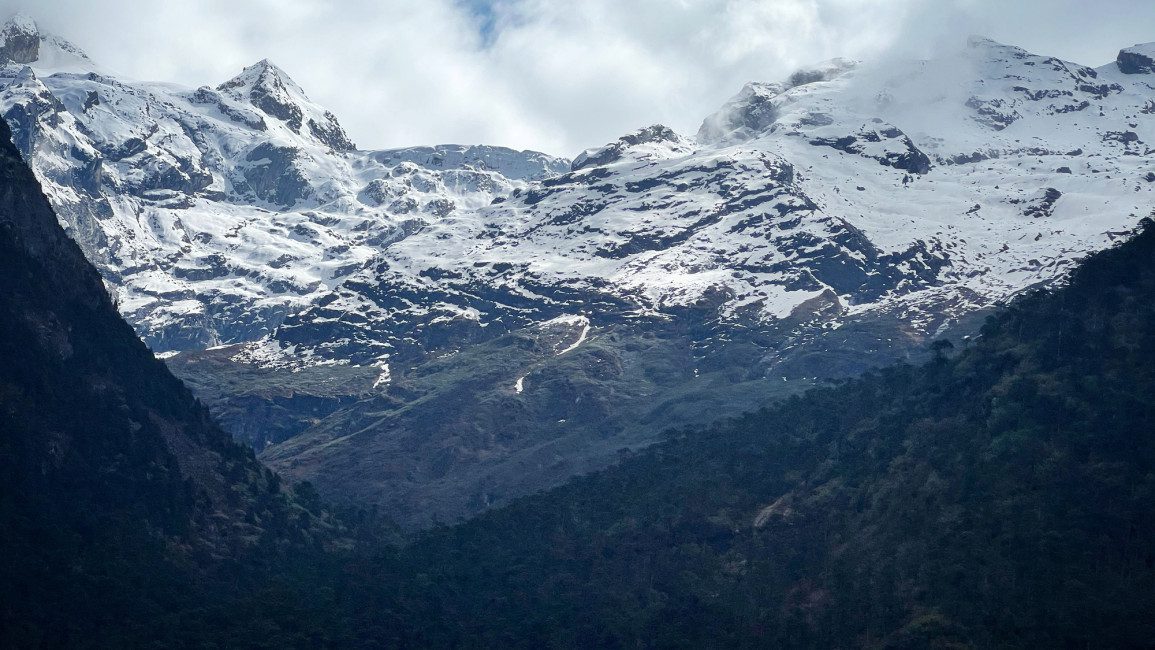Headlines
India: Himalayan glacial lake burst leaves at least 14 dead and 102 missing

Rescue teams from India looked for 102 people missing on Thursday after a high-altitude glacier lake burst in a horrific flash flood that at least 14 people were killed in, according to reports.
Climate scientists warn that as global temperatures rise and ice melts, violent floods from glacier lakes blocked by loose rock has increased in frequency. They warn that this poses a growing hazard over the larger Himalayan mountain range.
A day after a wall of water rushed down the mountainous valley in northeastern India, “at least 14 people were killed and 102 others reported missing,” Prabhakar Rai, director of the Sikkim state disaster management department, said AFP.
Authorities said that 14 bridges had been washed away and that highways had been “severely” damaged.
Rescuers were struggling to assist individuals affected by the flood as communications were cut off in several places and roads were obstructed.
According to an Indian Army spokeswoman, Himanshu Tiwari, “Floodwaters have wreaked havoc in four districts of the state, sweeping away people, roads, and bridges.”
According to the army, there are 22 servicemen that are missing. One soldier who had been missing was found.
In a statement, the army said it was attempting to restore phone service and offer “medical aid to tourists and locals stranded”.
The high-altitude Lhonak Lake, which is located at the foot of a glacier among peaks surrounding the third-highest mountain in the world, Kangchenjunga, had a water surge following strong rainfall.
The International Centre for Integrated Mountain Development (ICIMOD) research team claims that Himalayan glaciers are melting more quickly than ever as a result of climate change, putting people at risk of unpredictably expensive disasters.
Significant devastation
The Sikkim state administration reported that water powered downstream, adding to a river that was already swollen from monsoon rains, breaking a dam, washing away homes and bridges, and causing “serious destruction”.
Prime Minister Narendra Modi has pledged “all possible support” for people impacted after damage was discovered more least 120 kilometres (75 miles) downstream.
The size of Lhonak Lake decreased by about two-thirds, or an area roughly equal to 150 football fields (105 hectares), according to satellite images made public by the Indian Space Research Organisation.
According to Miriam Jackson, a scientist who specialises in ice and monitors the Himalayan areas for the Nepal-based ICIMOD, “intense rain has led to this catastrophic situation in Sikkim where the rain has triggered a glacial lake outburst flood and damaged a dam, and caused loss of life.”
We notice that as the climate continues to warm and moves us into uncharted area, extreme events like this occur more frequently.
According to climate experts, the average surface temperature of the Earth has increased by almost 1.2 degrees Celsius since pre-industrial times, but high-mountain regions around the world have warmed at double that rate.
Sikkim has a sizable military presence and is near to India’s borders with Nepal and China.
China’s escalating military aggression has caused India to be concerned, and their 3,500-kilometer (2,200-mile) shared border has long been a source of friction due to Beijing’s annexation of sections of Sikkim.
